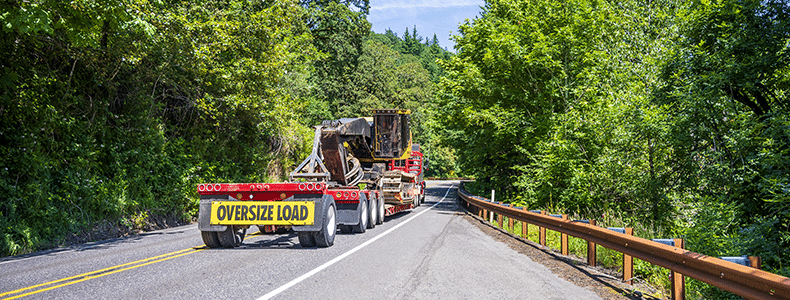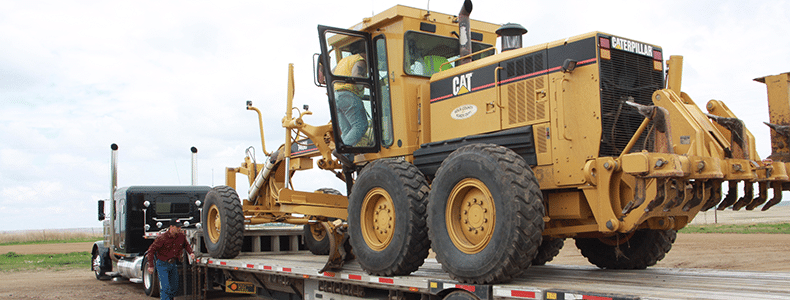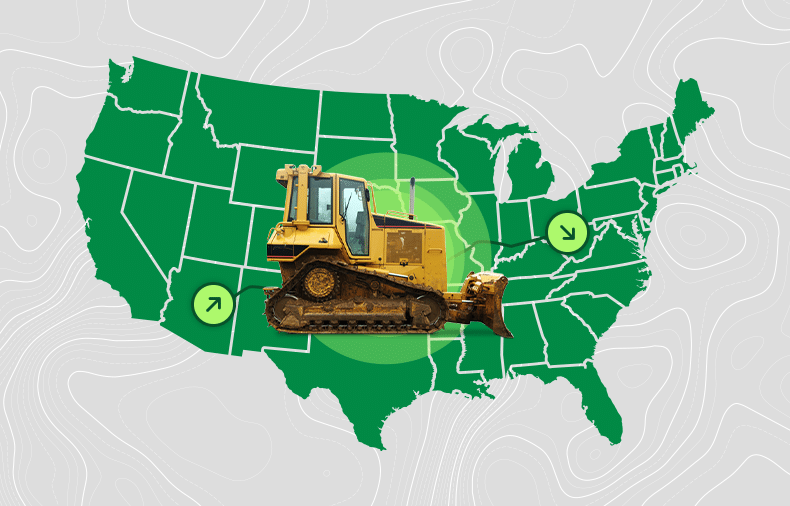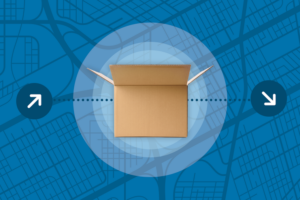It’s no secret that the logistics involved in heavy equipment transport can seem as massive as the machinery itself. Whether you’re overseeing operations at a construction site, managing a transportation company, or are part of the logistics team, the challenges of safely and efficiently moving oversized loads are considerable.
The beautiful thing about this, though, is that it doesn’t have to fall on your plate at all.
uShip connects you with thousands of carriers nationwide who want to work with you. They do all the heavy lifting for you so you can focus on getting the real work done. It’s outsourcing done right.
Here, we’ll take a look at all the work that you’ll need to do if you’re doing the heavy equipment transport yourself, and why using the uShip platform is a better idea.
The Heavy Equipment Transport Conundrum
Beyond the physical aspects around the sheer size of heavy equipment, there’s a web of local regulations, safety implications, and logistical considerations that can make or break a heavy hauling operation. A strategic approach to route planning is needed — it’s a fundamental aspect of successful heavy equipment transport.
Key Factors for Route Selection

Selecting the most appropriate route is the keystone of the transportation process. Several critical factors must be taken into account to ensure that the chosen path can accommodate the load safely and legally. Carriers on our platform do it every day; they know the process inside and out.
Road Restrictions
Weight and height restrictions are perhaps the most common road limitations encountered during heavy equipment hauling. Heavy machinery can quickly exceed the weight limits of ordinary roads, leading to a maze of detours and delays.
Familiarity with designated permit loads and specialized hauling routes is essential. You’ll need to access online resources, trucking maps, and engage with local transportation authorities to gain insight into these predetermined routes that can simplify the heavy haul experience.
Bridge Clearances
Navigating bridges that aren’t equipped for heavy loads is dangerous. The cost of a miscalculation is high — not only for the bridge’s structural integrity but also for the safety of everyone involved.
Checking bridge heights and weight capacities is non-negotiable prior to setting out. We’ve all seen the videos of drivers thinking they’ll fit under a bridge only to find out, after it’s too late, that they don’t. Advanced planning can prevent the headache of rerouting or incurring hefty bridge crossing fines.
Traffic Congestion
Heavy machinery moving through congested areas can turn a normal heavy equipment move into gridlock. Delays are more than an inconvenience; they impact project timelines and budgets.
Anticipating traffic bottlenecks and having alternative routes ready to divert can be a saving grace. Tools like live traffic updates and knowing peak traffic hours will assist in strategizing the most efficient times to hit the road.
Permits and Regulations
Certain states and locales mandate permits for the transportation of heavy equipment. These permits cover the load’s weight, width, height, and the designated route.
Ensure all necessary permits are obtained well in advance. A delay due to permit issues can cost valuable time and resources — not something to gamble on.
When you partner with uShip to move your heavy equipment, you get free bids from carriers who do this every single day. They know the routes. They understand permitting. They can read traffic like a book. You just don’t have to worry about any of it.
Additional Considerations

Beyond the basic route selection criteria, several additional considerations can make the process more difficult.
Weather Conditions
Inclement weather can turn a manageable trip into a dangerous one. High winds can be particularly treacherous for tall or top-heavy loads, while heavy rain or snow can affect road conditions.
Monitoring the forecast and being prepared to delay travel or adjust routes can mitigate the risks associated with adverse weather conditions. Having the right equipment on board should bad weather crop up is key, too. Knowing when it’s legal to use things like tire chains is key in this area.
Pilot Cars and Escorts
For extremely large or hazardous loads, the addition of pilot cars or police escorts may be mandatory. These professionals guide the main transport vehicle and alert surrounding traffic to the oversized cargo. Depending on the size and the areas you’re moving equipment through, you may be required to have these things in place.
You have to be aware of the specific regulations that pertain to the load being transported and have the necessary escort services arranged well in advance…or don’t and let the pros with uShip handle it.
Tools and Resources
With digital information and connected hardware, there are several tools and resources available to streamline route planning for heavy equipment.
GPS Navigation with Heavy Haul Features
Specialized GPS systems designed for heavy equipment hauling can be invaluable, but they aren’t cheap. These devices include features that take into account the size of the load and offer route options that comply with road restrictions and clearances.
Investing in a GPS with heavy haul capabilities can save you time and frustration by providing a reliable roadmap tailored to your specific needs.
State Department of Transportation Websites
For the latest and most accurate information on road conditions, restrictions, and permit requirements, the state DOT websites are a goldmine. You have to stay tuned to these resources to ensure that your route planning is as up-to-date as possible.
Collaboration with Experienced Carriers
Heavy equipment carriers with a long tenure in the industry and a solid track record are walking encyclopedias of route knowledge. Engage with these professionals to tap into their wealth of experience and contacts.
Or you can just use uShip to book a carrier who takes the worry off your plate. All the issues named above (and many many more layers that we aren’t addressing here) could spell disaster for your business.
What it Comes Down To
Detailed and strategic route planning for heavy equipment hauling is more than a good idea – it’s imperative. If you’re DIYing your heavy equipment transport, you must meticulously consider road restrictions, local regulations, clearances, traffic conditions, permits, and weather to ensure a safe, efficient, and compliant haul.
But…
You wouldn’t perform your own root canal. You leave it to the pros. Heavy equipment transport is no different.
The unequivocal best option is to outsource heavy equipment moves to pros who do it every day. The best way to do it?
The uShip platform.
With uShip, you are able to place your heavy equipment move on our marketplace for free. Once posted, you’ll start to get bids from carriers who want to make your move as easy as possible. When you find a carrier and price that meets your needs, you’re work is essentially over — your carrier will take it from there.
It’s why Ritchie Bros. has partnered with us for over 14 years now.
There is a better way to move heavy equipment. uShip.



